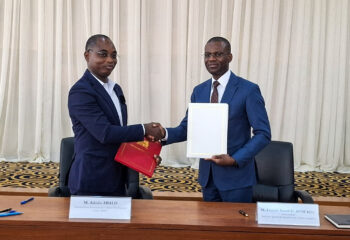March 8, 2012, JUBA, South Sudan – After years of technological isolation due to protracted war, the world’s newest nation prepares to transform its agricultural production from subsistence farming to commercial production by embracing the use of agricultural inputs.
This week, South Sudan will receive its first-ever consignment of fertilizers. The use of agro-inputs is in line with new government policies aimed at increasing food production.
The fertilizer, imported from Kenya, is currently being cleared for entry into South Sudan at the Nimule South Sudan-Uganda border point, and is expected in Juba over the weekend.
The fertilizer consignment was purchased with support from the U.S. Agency for International Development (USAID) through a new project – Seeds for Development – which is jointly implemented by the International Fertilizer Development Center (IFDC) and the Alliance for a Green Revolution in Africa (AGRA).
This is the first time in the history of the southern Sudan region that farmers will be exposed to mineral fertilizers and hybrid seeds following the drafting of new government policies to increase agricultural production and productivity.
The fertilizer consignment worth US $17,000 comprises 6.0 metric tons (mt) of diammonium phosphate (DAP) for planting and another 6.0 mt of urea for top dressing.
This consignment is designated for demonstrating the new technology to about 6,000 smallholder farmers in South Sudan’s Green Belt which transverses the three States of Central, Eastern and Western Equatorial, where the Seeds for Development project is being implemented.
About 85 percent of South Sudan’s population relies on agriculture for their livelihood. However, most of the country’s farmers use traditional farming methods, which barely meet their daily household consumption needs. The country imports more than 80 percent of its food from Uganda and Kenya in order to keep up with the rapidly growing national food demand.




